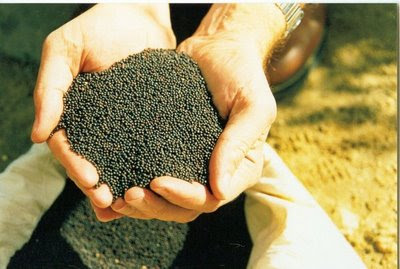
Don says:
"I had the wonderful privilege of touring Mullins Food Products, Makers of mayonnaise.. "(Mayonnaise) doesn't even have to be refrigerated. No harm in refrigerating it, but it's not really necessary." He (the food chemist) explained that the pH in mayonnaise is set at a point that bacteria could not survive in that environment.
(The food chemist) says that when food poisoning is reported, the first thing the officials look for is when the 'victim' last ate ONIONS and where those onions came from (in the potato salad?). Ed says it's not the mayonnaise (as long as it's not homemade Mayo) that spoils in the outdoors. It's probably the onions, and if not the onions, it's the POTATOES.
He explained, onions are a huge magnet for bacteria, especially uncooked onions. You should never plan to keep a portion of a sliced onion. He says it's not even safe if you put it in a zip-lock bag and put it in your refrigerator. "
Ye gods! Where do I start?
The easy bit first: see a previous post on the myth of onions being bacteria magnets. Make sure you read the comments, as the saga went on for a while.
Secondly, there is a popular myth (only in the US for some reason) that mayonnaise is a chief culprit in food poisonings. It isn't. Or at least commercial mayonnaise isn't, as it is made in strictly controlled conditions.
- The pH of mayonnaise is kept low, at a level that bacteria cannot survive.
- The water activity of mayonnaise is low, meaning that the moisture present in the mayonnaise is not available to the bacteria (or mould) to use and
- the product is made in sterile conditions.
The consequences of that last item eludes many people. They think that bacteria just happen. That is as sensible as watching a field, hoping for corn to grow. If you don't plant it, it wont grow.
And "if not the onions, then the potatoes"?
Anything that grows in dirt can have bacteria on it. It will be in an environment where there is E-coli, Salmonella, Clostridium, lots of bugs with long and threatening names. Wherever birds poop and animals roam will have bacteria. You meet up with them every day of your life. And survive.
But if you take some potatoes and cook them there will be no bacteria alive on them.
Put them in a potato salad with mayonnaise and they will still have no bacteria on them.
The biggest problem is when you add bacteria to the salad yourself and then leave the salad sitting unrefrigerated for hours on end. At room temperature bacteria multiply tenfold an hour.
So where do these bacteria come from? Spices, raw unwashed vegetables and, most commonly, poor personal hygiene when preparing the food.
But from the mayonnaise? No.
From onions? No.
From cooked potatoes? No.
...








